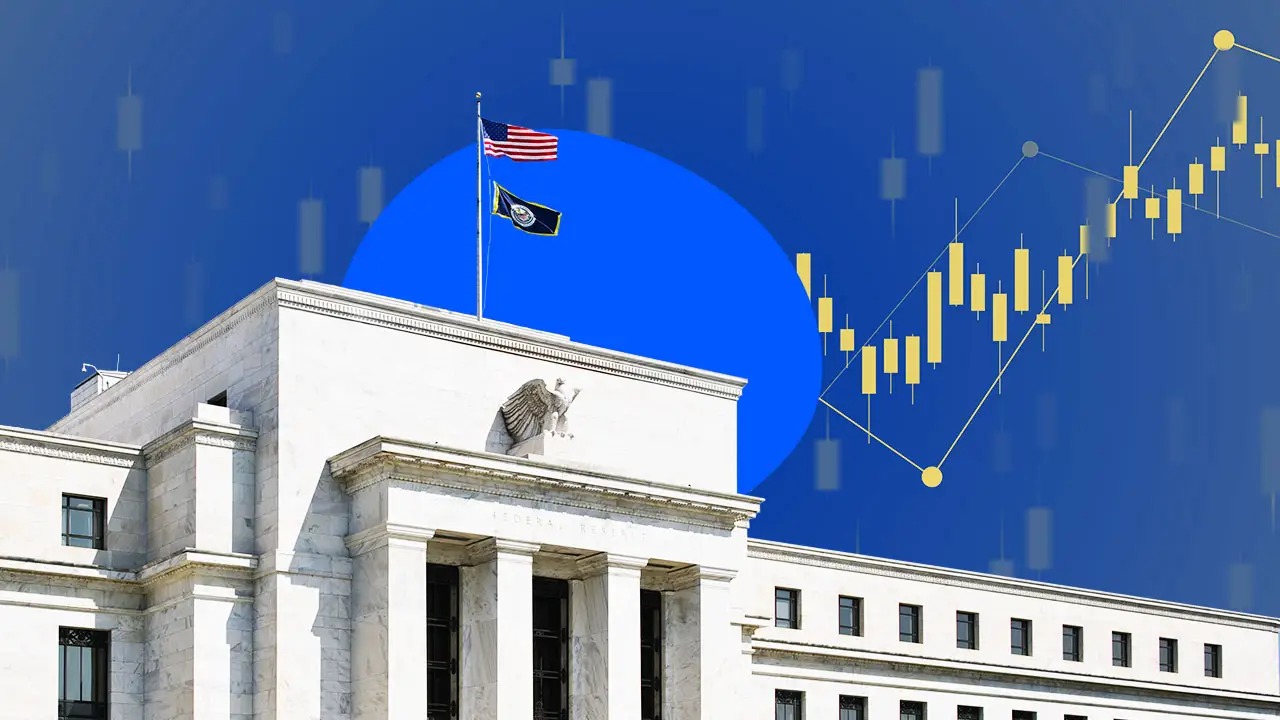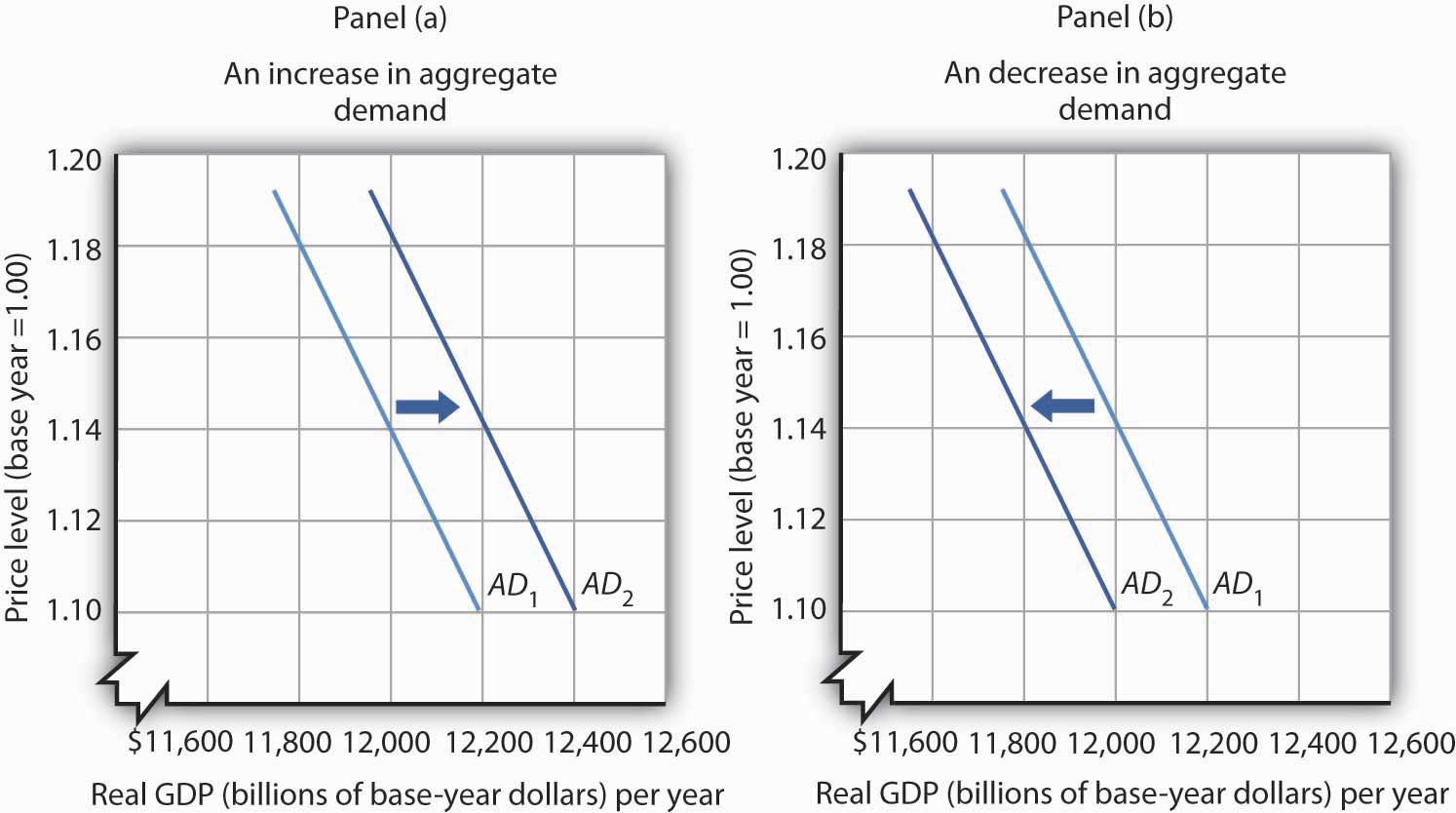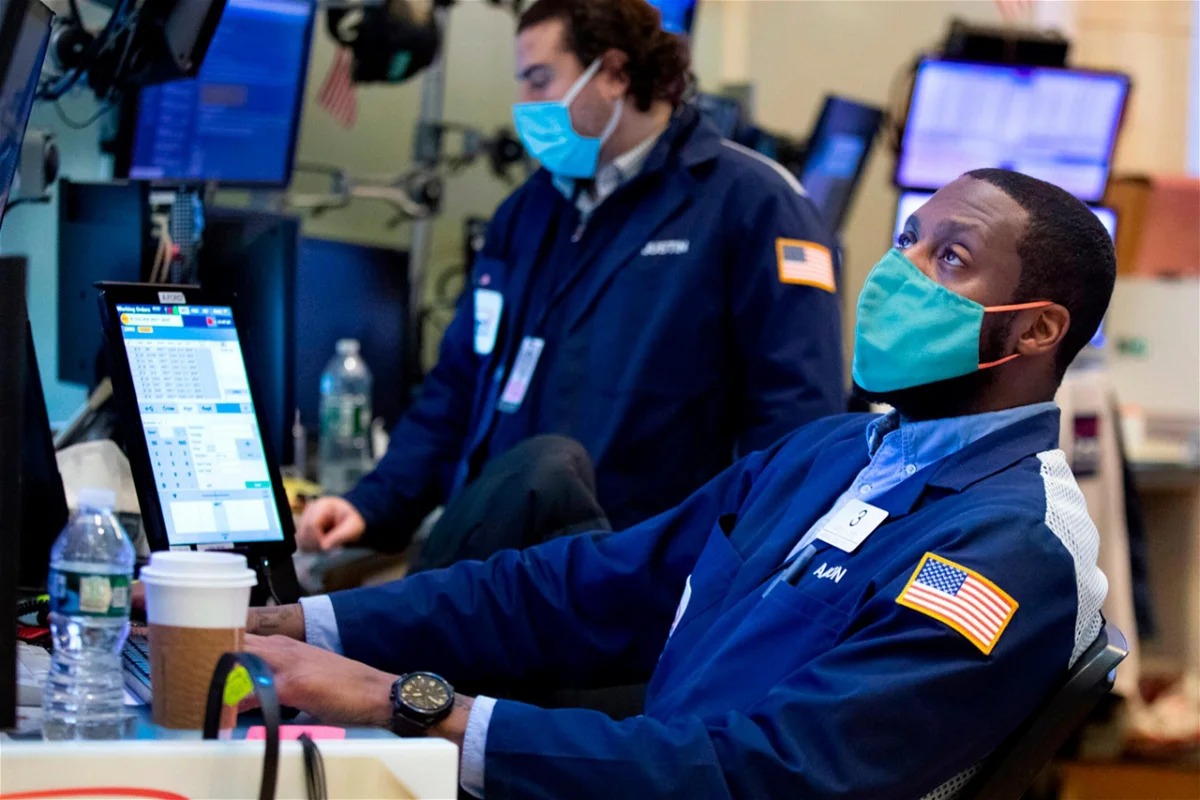Home>Finance>When Is The Federal Funds Raising Interest Rates?


Finance
When Is The Federal Funds Raising Interest Rates?
Published: November 1, 2023
Stay updated on the latest changes in finance with our comprehensive guide. Find out when the Federal Funds will be raising interest rates and make informed financial decisions.
(Many of the links in this article redirect to a specific reviewed product. Your purchase of these products through affiliate links helps to generate commission for LiveWell, at no extra cost. Learn more)
Table of Contents
Introduction
The Federal Funds Rate is a key interest rate in the United States which heavily influences the borrowing costs for individuals, businesses, and financial institutions. It plays a crucial role in the overall health of the economy and impacts various sectors, including housing, investments, and consumer spending.
The Federal Funds Rate is the interest rate at which banks and other depository institutions lend money to each other to fulfill their reserve requirements. As a result, it serves as a benchmark for other interest rates in the financial system.
Understanding when the Federal Reserve, the central bank of the United States, is likely to raise the Federal Funds Rate is of great importance to investors, borrowers, and the general public. This article aims to provide insights into when the Federal Funds Rate may increase, as well as the factors and indicators that influence this decision.
It’s important to note that the Federal Reserve has a dual mandate of maintaining price stability and maximizing employment. As such, its decisions on interest rates are driven by economic indicators, such as inflation, unemployment rate, GDP growth, and market conditions.
By examining the historical context, current economic conditions, and the Federal Reserve’s statements and projections, we can glean information on possible timing for future rate hikes. Anticipating these changes allows individuals and businesses to make informed financial decisions and prepare for potential impacts on their finances.
In the following sections, we will delve deeper into the overview of the Federal Funds Rate, the factors influencing its movement, the Federal Reserve’s role in setting interest rates, recent trends, and signals for rate increases, potential timing for future rate hikes, and the potential impact of rising interest rates. Let’s explore this intricate topic further.
Overview of the Federal Funds Rate
The Federal Funds Rate refers to the interest rate at which depository institutions, such as banks, lend and borrow funds from each other overnight to maintain their reserve requirements. It is a tool employed by the Federal Reserve to manage monetary policy and steer the economy.
As the Federal Funds Rate serves as a reference rate, it has a profound impact on the interest rates offered to consumers and businesses. When the Federal Funds Rate increases, borrowing costs tend to rise, resulting in higher interest rates for mortgages, auto loans, credit cards, and other forms of credit.
Conversely, when the Federal Funds Rate decreases, borrowing costs generally decline, making it more affordable to obtain credit and stimulating economic growth.
The Federal Reserve’s Open Market Committee (FOMC) is responsible for setting the Federal Funds Rate through its monetary policy decisions. These meetings occur approximately eight times a year, during which the FOMC assesses economic conditions and determines whether to adjust the interest rate.
The Federal Funds Rate is a closely watched indicator as it reflects the current stance of monetary policy and provides insight into the Federal Reserve’s views on inflation, employment, and overall economic activity.
Changes to the Federal Funds Rate are not implemented in isolation. They are part of a broader strategy employed by the Federal Reserve to achieve its dual mandate of maintaining price stability and promoting maximum employment.
Overall, the Federal Funds Rate serves as a vital tool for influencing economic activity and controlling inflation. Understanding its dynamics is crucial for individuals, businesses, and investors to make informed decisions regarding borrowing, saving, and investing.
Factors Influencing the Federal Funds Rate
The Federal Funds Rate is influenced by various factors, including both domestic and global economic conditions. These factors help the Federal Reserve assess the appropriate level of interest rates to maintain price stability and maximize employment. Let’s explore some of the key factors that influence the Federal Funds Rate:
- Inflation: Inflation, or the rate at which prices of goods and services rise, is a critical factor in setting the Federal Funds Rate. A higher inflation rate often leads to higher interest rates to curb excessive borrowing and spending.
- Unemployment: The level of unemployment in the economy is another significant factor. When unemployment is high, the Federal Reserve may lower interest rates to stimulate spending and investment, thus promoting job creation.
- Growth and GDP: The overall economic growth and Gross Domestic Product (GDP) growth rate play a vital role in determining interest rates. Stronger economic growth may lead to higher interest rates to prevent overheating, while slower growth may result in lower interest rates to stimulate economic activity.
- Financial Markets: The performance of financial markets, including stock markets and bond markets, can influence the Federal Funds Rate. If market conditions are stable and there is high demand for funds, the Federal Reserve may opt to raise interest rates to prevent excess borrowing and potential asset bubbles.
- Global Economic Conditions: Global factors, such as international trade, exchange rates, and foreign economic developments, can also impact the Federal Funds Rate. Turbulence in global markets or a slowdown in major economies may influence the Federal Reserve’s decision to adjust interest rates.
- Monetary Policy Objectives: Finally, the Federal Reserve’s monetary policy objectives, as outlined in its dual mandate of maintaining price stability and maximizing employment, guide decisions on interest rates. The Federal Reserve aims to balance these objectives while considering the various economic factors at play.
It’s important to note that these factors are interconnected, and the Federal Reserve relies on a careful analysis of all relevant data and indicators to make informed decisions on interest rates. By monitoring these factors, investors, businesses, and individuals can gain insights into potential changes in the Federal Funds Rate and adjust their financial strategies accordingly.
The Federal Reserve’s Role in Setting Interest Rates
The Federal Reserve, often referred to as the central bank of the United States, plays a crucial role in determining and setting interest rates, including the Federal Funds Rate. Established in 1913, the Federal Reserve is responsible for conducting monetary policy to promote price stability and maximum employment.
The Federal Reserve’s primary tool for influencing interest rates is the open market operations, specifically the buying and selling of US government securities, such as Treasury bonds. By buying government securities, the Federal Reserve injects money into the banking system, thereby lowering interest rates. Conversely, selling government securities drains money from the system, leading to higher interest rates.
The Federal Reserve also has a discount window, which allows banks to borrow funds directly from the central bank when they require additional liquidity. The interest rate charged on these loans, known as the discount rate, can serve as a benchmark for other rates in the financial system.
The monetary policy decisions of the Federal Reserve are made by the Federal Open Market Committee (FOMC), which includes members of the Federal Reserve Board of Governors and several regional Federal Reserve Bank presidents. The FOMC meets approximately eight times a year to assess economic conditions, financial market developments, and inflation trends.
Based on this assessment, the FOMC determines whether to adjust the Federal Funds Rate to achieve the Federal Reserve’s objectives. The FOMC’s decisions are influenced by a wide range of economic indicators, such as inflation rates, employment data, GDP growth, and consumer spending patterns.
The Federal Reserve carefully communicates its decisions and forward guidance to the public and financial markets. The Chair of the Federal Reserve holds press conferences after certain FOMC meetings to provide insights into the committee’s thinking and outlook on interest rates.
It’s worth noting that the Federal Reserve’s decisions on interest rates are not solely based on economic indicators but also take into account the broader context of financial stability, international developments, and other relevant factors.
Overall, the Federal Reserve’s role in setting interest rates is immense. By utilizing various tools and considering a wide range of economic factors, the Federal Reserve aims to maintain stable inflation, support sustainable economic growth, and foster a conducive environment for employment and investment.
Recent Trends and Signals for Rate Increases
In recent years, the Federal Reserve has implemented a gradual increase in interest rates to normalize monetary policy following the global financial crisis. However, the outbreak of the COVID-19 pandemic in 2020 prompted the Federal Reserve to slash interest rates to near-zero levels to support the economy.
As the economy recovers and inflationary pressures build, there has been speculation about when the Federal Reserve might begin raising interest rates again. The timing and pace of rate increases are influenced by a variety of factors; here are some recent trends and signals to consider:
- Economic Recovery: The pace and strength of the economic recovery influence the Federal Reserve’s decision to raise interest rates. As the economy exhibits sustained growth, low unemployment rates, and rising inflation, the Federal Reserve may see the need to increase rates to prevent overheating.
- Inflationary Pressures: Rising inflation is a key factor in determining the timing of rate hikes. The Federal Reserve closely monitors inflation indicators, such as the Consumer Price Index (CPI), and aims to maintain stable prices. If inflation exceeds the Federal Reserve’s target level, it may prompt the central bank to tighten monetary policy and raise interest rates.
- Employment Levels: The Federal Reserve also considers the state of the labor market when assessing the need for rate increases. A strong job market, characterized by low unemployment rates and robust job creation, can indicate a need to cool the economy and raise interest rates to avoid excessive inflation.
- Federal Reserve Communications: The Federal Reserve provides forward guidance through its public communications, such as the FOMC statements and speeches by the Chair. These statements offer insights into the central bank’s outlook on the economy and interest rates, providing signals for potential rate increases.
- Global Economic Conditions: The Federal Reserve considers global economic factors when determining interest rate policy. Events and developments in major economies, trade tensions, and exchange rate fluctuations can impact the outlook for the U.S. economy and influence the Federal Reserve’s decisions regarding interest rates.
It is important to note that while these trends and signals provide useful information, the Federal Reserve carefully assesses a wide range of economic data and indicators before deciding on interest rate changes. The central bank aims to make well-informed and data-driven decisions to balance its dual mandate of price stability and maximum employment.
Market participants, investors, and individuals should stay informed about these trends and signals, keeping an eye on economic indicators, Federal Reserve communications, and global developments, to anticipate the potential timing of rate increases and adjust their financial strategies accordingly.
Potential Timing for Future Federal Funds Rate Increases
Forecasting the exact timing for future Federal Funds Rate increases is a challenging task, as it depends on numerous economic factors, global events, and the Federal Reserve’s assessment of monetary policy goals. However, by analyzing the current economic landscape and considering various indicators, we can make educated predictions about potential timing. Here are some factors to consider:
- Economic Recovery: The pace and strength of the economic recovery play a significant role in determining the timing of rate increases. As the economy continues to rebound from the impacts of the COVID-19 pandemic, with sustained growth, declining unemployment rates, and rising inflationary pressures, the Federal Reserve may consider gradually increasing interest rates.
- Inflation Trends: Inflation is a crucial factor influencing the Federal Reserve’s decision-making process. If inflation remains above the Federal Reserve’s target level for an extended period, it may prompt the central bank to raise interest rates as a measure to control price growth and maintain price stability.
- Labor Market Conditions: The state of the job market is another crucial aspect. A strong labor market, with low levels of unemployment and robust job creation, may prompt the Federal Reserve to tighten monetary policy through rate increases to prevent excessive inflationary pressure.
- Federal Reserve Communications: The Federal Reserve’s forward guidance and communications provide crucial hints about its future policy decisions. Market participants closely monitor speeches, press conferences, and FOMC statements from Federal Reserve officials to gauge their sentiment regarding interest rate policy. Any shifts in their messaging may suggest potential changes in the Federal Funds Rate.
- Global Economic Developments: Global events and economic conditions can also impact the timing of future rate increases. Factors such as geopolitical tensions, international trade dynamics, and the overall health of major economies can influence the Federal Reserve’s decision-making process.
It is essential to note that the Federal Reserve closely analyzes a wide range of indicators, data, and economic projections before making any decisions on interest rates. The central bank’s approach is data-dependent and aims to strike a balance between supporting economic growth and maintaining price stability.
While no precise timeline can be predicted, based on current trends and information, it is reasonable to expect that the Federal Reserve may commence raising interest rates gradually as the economy continues to recover and inflationary pressures build. However, the exact timing and pace of rate hikes will depend on the evolving economic conditions and data in the coming months.
To stay informed about potential timing for future Federal Funds Rate increases, it is advisable to monitor economic indicators, Federal Reserve announcements, and global economic developments. This will enable individuals, businesses, and investors to adapt their financial strategies and prepare for potential impacts on borrowing costs, investments, and overall financial planning.
Potential Impact of Rising Interest Rates
Rising interest rates can have a significant impact on various aspects of the economy and financial markets. As the Federal Reserve gradually increases the Federal Funds Rate, it is important to understand the potential consequences. Here are some key areas that may be affected:
- Borrowing Costs: One of the most noticeable effects of rising interest rates is the increased cost of borrowing. Mortgage rates, auto loan rates, and credit card interest rates may rise, making it more expensive for individuals and businesses to borrow money.
- Savings and Investments: Rising interest rates can benefit savers since they may earn higher returns on savings accounts, certificates of deposit (CDs), and other fixed-income investments. However, these higher rates may present challenges for bond prices, as existing bonds with lower rates become less attractive to investors.
- Housing Market: The housing market can be particularly sensitive to changes in interest rates. As rates rise, the cost of borrowing for mortgages increases, potentially reducing affordability for homebuyers. This may lead to a slowdown in the housing market activity, affecting both homebuyers and sellers.
- Business Investment and Expansion: Higher interest rates can impact business borrowing costs, affecting their investment decisions and expansion plans. Increased borrowing costs may result in a slowdown in business activity, reducing capital expenditures and potentially impacting job creation.
- Consumer Spending: Rising interest rates can also influence consumer spending patterns. As borrowing costs for credit cards and other loans increase, individuals may be more cautious about discretionary spending, leading to a potential slowdown in consumer-driven sectors of the economy.
- Stock Market Volatility: Changes in interest rates can impact investor sentiment and market dynamics. As rates rise, it may lead to increased market volatility as investors reassess their investment portfolios, particularly in interest-sensitive sectors such as utilities and real estate.
It is important to note that the impact of rising interest rates can vary across industries, individual financial circumstances, and economic conditions. While some sectors may experience challenges, others may benefit from the increased returns on savings and investments.
It is crucial for individuals, businesses, and investors to plan and adapt their financial strategies accordingly. Monitoring interest rate trends and staying informed about potential rate increases can help in making well-informed decisions regarding borrowing, saving, investing, and other financial activities.
Ultimately, the Federal Reserve aims to strike a balance between supporting economic growth and managing inflation. As interest rates rise, it is important to assess the broader economic context and make adjustments to financial plans to mitigate any potential negative impacts and take advantage of new opportunities that may arise.
Conclusion
The Federal Funds Rate and the timing of interest rate increases are crucial factors that impact the overall economy, financial markets, and individuals’ financial well-being. Understanding the dynamics of these interest rates and their potential impact is essential for making informed decisions regarding borrowing, saving, investing, and planning for the future.
In this article, we explored the overview of the Federal Funds Rate and how it influences other interest rates. We discussed the factors that drive the Federal Reserve’s decisions, such as inflation, unemployment, economic growth, and global conditions.
Furthermore, we explored recent trends and signals for rate increases, considering economic recovery, inflation, labor market conditions, and Federal Reserve communications. While predicting the exact timing of future rate increases is challenging, being aware of these factors and staying informed enables individuals and businesses to adjust their financial strategies accordingly.
We also examined the potential impact of rising interest rates on borrowing costs, savings, investments, the housing market, business activity, consumer spending, and the stock market. Recognizing the potential consequences allows for proactive planning, adapting to changing market dynamics, and mitigating any risks or challenges.
In conclusion, staying informed about the Federal Funds Rate and its potential trajectory is essential. This knowledge empowers individuals, businesses, and investors to make informed financial decisions, navigate changing economic conditions, and seize opportunities as they arise.
By monitoring economic indicators, following Federal Reserve communications, and staying updated on global developments, individuals can better prepare themselves for the potential impacts of interest rate increases and secure their financial future.














